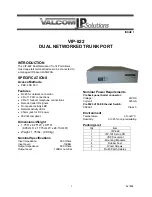
42
Neighbor discovery
In a PIM domain, a PIM router discovers PIM neighbors and maintains PIM neighboring relationship with
other routers. It also builds and maintains SPTs by periodically multicasting hello messages to all other
PIM routers (224.0.0.13) on the local subnet.
Every PIM-enabled interface on a router sends hello messages periodically, and thus learns the PIM
neighboring information pertinent to the interface.
SPT building
The process of building an SPT is the flood-and-prune process.
1.
In a PIM-DM domain, when a multicast source S sends multicast data to multicast group G, the
multicast packet is first flooded throughout the domain. The router first performs RPF check on the
multicast packet. If the packet passes the RPF check, the router creates an (S, G) entry and forwards
the data to all downstream nodes in the network. In the flooding process, an (S, G) entry is created
on all the routers in the PIM-DM domain.
2.
Nodes without receivers downstream are pruned. A router having no receivers downstream sends
a prune message to the upstream node. The message notifies the upstream node to delete the
corresponding interface from the outgoing interface list in the (S, G) entry and to stop forwarding
subsequent packets addressed to that multicast group down to this node.
NOTE:
•
An (S, G) entry contains the multicast source address S, multicast group address G, outgoing interface
list, and incoming interface.
•
For a given multicast stream, the interface that receives the multicast stream is called "upstream," and
the interfaces that forward the multicast stream are called "downstream."
A prune process is first initiated by a leaf router. As shown in
, a router without any receiver
attached to it (the router connected with Host A, for example) sends a prune message. This prune process
goes on until only necessary branches are left in the PIM-DM domain. These branches constitute the SPT.
Figure 18
SPT building
Source
Server
Host A
Host B
Host C
Receiver
Receiver
Multicast packets
SPT
Prune message
















































